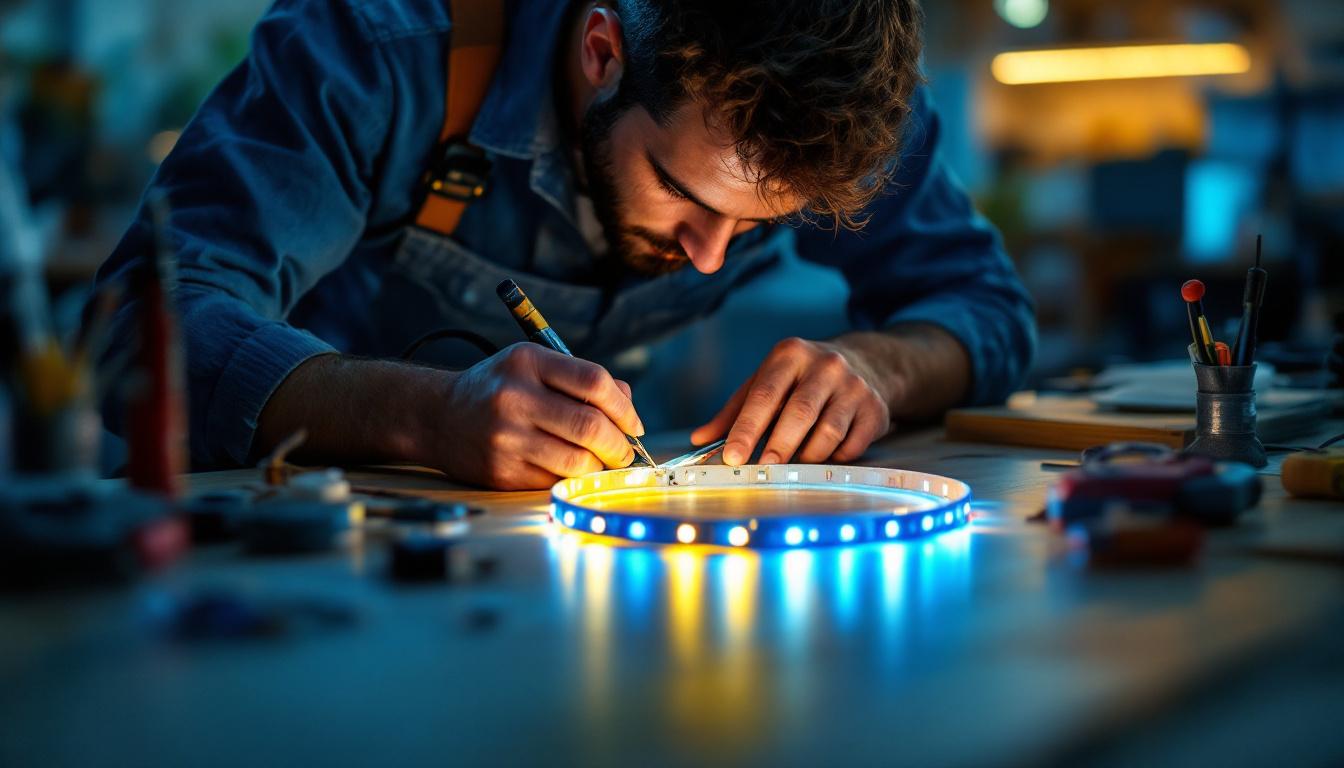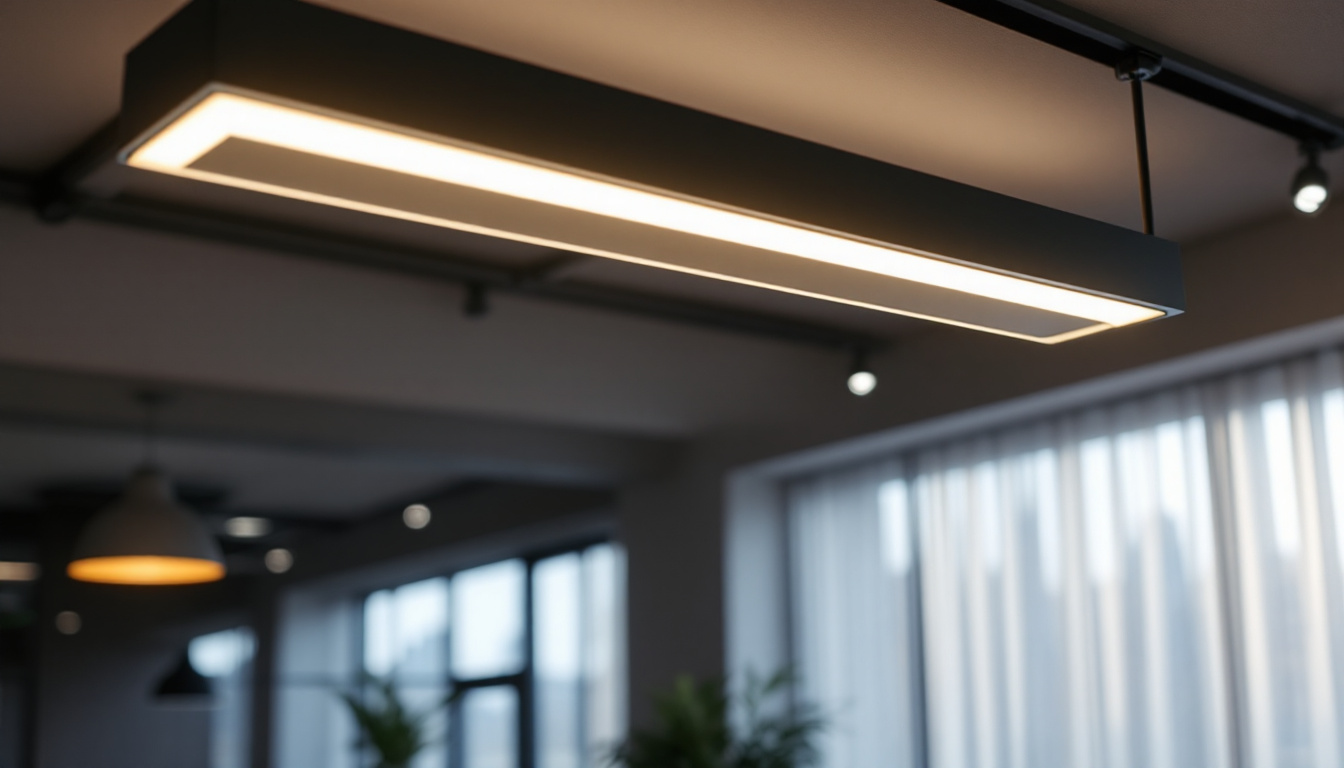
LED strip lighting has revolutionized the way lighting contractors approach both residential and commercial projects. Its flexibility, energy efficiency, and ease of installation make it a popular choice for creating ambient, task, and accent lighting. However, to ensure seamless integration and optimal performance, splicing LED strips is a critical skill that every lighting contractor must master.
Splicing LED strips involves connecting two or more sections of LED tape to extend length, navigate corners, or repair damaged segments. Proper splicing not only guarantees electrical continuity but also maintains the aesthetic integrity of the installation. This article explores the essential tools lighting contractors need to execute high-quality LED strip splicing, ensuring durability, safety, and client satisfaction.
To begin with, understanding the different types of LED strips available on the market is crucial for any contractor. LED strips come in various densities, colors, and voltages, each suited for specific applications. For instance, high-density strips are ideal for areas requiring bright illumination, such as kitchens or workspaces, while lower-density options may be more appropriate for mood lighting in living rooms or bedrooms. Additionally, knowing the difference between single-color and RGB strips allows contractors to offer customized solutions that meet their clients’ unique lighting needs.
Moreover, the choice of connectors and soldering techniques can significantly impact the quality of the splice. While many contractors opt for solderless connectors for their convenience, mastering soldering can provide a more robust and reliable connection, particularly in high-traffic areas where cables may be subject to wear and tear. Furthermore, understanding the importance of heat dissipation and using appropriate heat shrink tubing can prevent potential damage to the LED strips, ensuring a longer lifespan and consistent performance. By equipping themselves with this knowledge, lighting contractors can enhance their skill set and deliver exceptional results that exceed client expectations.
Before diving into the tools, it’s important to understand why proper splicing is crucial. LED strips are low-voltage devices that rely on consistent electrical connections to function correctly. Poor splicing can lead to flickering, uneven brightness, or complete failure of the lighting system. Additionally, improper connections may pose safety hazards such as short circuits or overheating.
Lighting contractors must deliver reliable installations that meet industry standards and client expectations. Mastering the art of splicing with the right tools ensures that LED strips perform optimally over time, reducing callbacks and enhancing professional reputation.
Moreover, the longevity of LED strips can be significantly impacted by the quality of splicing. When connections are made poorly, it can result in increased resistance at the joint, which generates heat and can ultimately shorten the lifespan of the LEDs. This is particularly important in applications where LED strips are used in high-usage environments, such as commercial spaces or outdoor settings. By ensuring that splices are done correctly, contractors not only enhance the performance of the lighting but also contribute to energy efficiency, as well-spliced connections minimize power loss.
Furthermore, the aesthetic appeal of LED installations can be compromised by improper splicing. Visible wires or uneven lighting can detract from the overall design, making it essential for contractors to focus on clean, professional connections. This attention to detail not only satisfies clients but also showcases the contractor’s commitment to quality craftsmanship. In an industry where visual impact is paramount, ensuring that every splice is executed with precision can make a significant difference in the final outcome of a project.
Successful LED strip splicing depends on having the right tools at hand. These tools facilitate precise cutting, secure connections, and proper insulation, all of which contribute to a professional finish. Below is a detailed overview of the essential tools every lighting contractor should include in their toolkit.
Accurate cutting is the foundation of any LED strip installation. Precision wire cutters allow contractors to trim LED strips cleanly at designated cut points without damaging the circuitry. Wire strippers are equally important for preparing the wires that will connect the LED strips to power sources or controllers.
High-quality cutters and strippers reduce the risk of damaging the delicate copper pads and ensure clean edges for soldering or connector attachment. Ergonomic designs also help reduce hand fatigue during repetitive tasks.
For permanent and reliable splicing, soldering remains the gold standard. A temperature-controlled soldering iron with a fine tip enables contractors to make precise solder joints on the small copper pads of LED strips. This ensures strong electrical connections and mechanical stability.
Additional accessories such as rosin-core solder, solder wick, and flux help improve joint quality and facilitate repairs. Investing in a soldering station with adjustable temperature control can prevent damage to sensitive LED components.
While soldering offers durability, LED strip connectors provide a quicker and often tool-free alternative for splicing. These connectors come in various forms, including clip-on, snap-on, and slide-in types, designed for different strip widths and configurations.
Connectors are especially useful for installations requiring frequent disassembly or modifications. However, contractors should ensure connectors are compatible with the LED strip type (single color, RGB, or RGBW) and gauge to maintain electrical integrity.
Insulating spliced connections is vital to prevent short circuits and protect against moisture and dust. Heat shrink tubing provides a durable and professional insulation method. After splicing, sliding heat shrink tubing over the joint and applying heat creates a tight seal around the connection.
Electrical tape can be used for additional insulation or in situations where heat shrink tubing is impractical. However, heat shrink tubing is generally preferred for its longevity and neat appearance.
Testing is an indispensable step in any LED strip installation. A digital multimeter allows contractors to verify electrical continuity across spliced joints, check voltage levels, and detect potential faults before powering the system fully.
Regular use of a multimeter ensures that every splice is electrically sound, preventing issues such as flickering or partial lighting that could compromise the final installation.
For connections involving wires rather than direct strip-to-strip splicing, crimping tools are essential. They enable secure attachment of terminals, connectors, or butt splices to wires, ensuring stable electrical and mechanical connections.
Quality crimping tools provide consistent pressure and reduce the risk of loose connections that can lead to intermittent failures.
Beyond the basics, certain advanced tools can enhance efficiency and quality in complex LED strip projects. These tools are particularly useful for large-scale commercial installations or custom lighting designs.
A soldering jig is a specialized fixture that holds LED strips securely in place during soldering. This tool improves precision and reduces the risk of movement, which can cause poor solder joints.
Using a jig is especially beneficial when working with very narrow or flexible strips where steady hands alone may not suffice.
Thermal imaging cameras help contractors identify hotspots or uneven heat distribution in LED strip installations. This is critical for diagnosing potential electrical issues or poor heat dissipation that could shorten LED lifespan.
While not essential for every job, thermal imaging is a valuable diagnostic tool for high-end or warranty-sensitive projects.
Proper cable management enhances both the aesthetics and safety of LED strip installations. Tools such as cable ties, adhesive clips, and raceways help organize wiring and prevent strain on spliced connections.
Neat cable management also facilitates easier maintenance and troubleshooting in the future.
Having the right tools is only part of the equation. Lighting contractors must also adhere to best practices to ensure successful splicing outcomes.
LED strips have designated cut points, usually marked by copper pads or scissor icons. Cutting outside these points can damage the circuitry and void warranties. Always cut precisely at the marked locations.
Different LED strips (e.g., single color, RGB, RGBW) have varying numbers of copper pads and wiring requirements. Use connectors and soldering techniques compatible with the specific strip to avoid wiring errors.
After splicing, test each connection with a multimeter and power the strip briefly to check for consistent illumination. This step helps catch issues early, saving time and effort later.
Always insulate spliced joints with heat shrink tubing or electrical tape to protect against moisture and mechanical stress. Consider environmental factors such as humidity or outdoor exposure when selecting insulation materials.
Cleanliness affects solder quality. Remove flux residues and avoid contaminating copper pads with oils or dirt. Use isopropyl alcohol and lint-free cloths for cleaning.
Splicing LED strips is a fundamental skill that directly impacts the quality and longevity of lighting installations. By investing in essential tools such as precision cutters, soldering equipment, connectors, insulation materials, and testing devices, lighting contractors can deliver flawless results that meet client expectations and industry standards.
Moreover, adopting best practices and leveraging advanced tools for complex projects further enhances professionalism and efficiency. As LED technology continues to evolve, staying equipped with the right tools and knowledge will remain a cornerstone of successful lighting contracting.
Ultimately, the combination of skill, tools, and attention to detail ensures that LED strip lighting installations are not only visually stunning but also safe, reliable, and durable.
Ready to elevate your lighting installations with the best tools in the industry? Look no further than LumenWholesale for all your LED strip splicing needs. Our extensive selection of spec-grade lighting products ensures you have access to reliable, high-performance tools at unbeatable wholesale prices. Say goodbye to local distributor markups and hello to superior lighting products with free shipping on bulk orders. Don’t compromise on quality or value; experience the best in wholesale lighting and make every project shine with LumenWholesale.

Discover how long ceiling lights can revolutionize the workflow for lighting contractors, offering significant savings in both time and money.

Discover innovative hacks for smart lighting contractors to optimize industrial light bulb installations.

Discover the often-overlooked details about 6-inch LED can lights that every lighting contractor should know.

Discover the frequent pitfalls lighting contractors encounter when installing exterior entry lights.